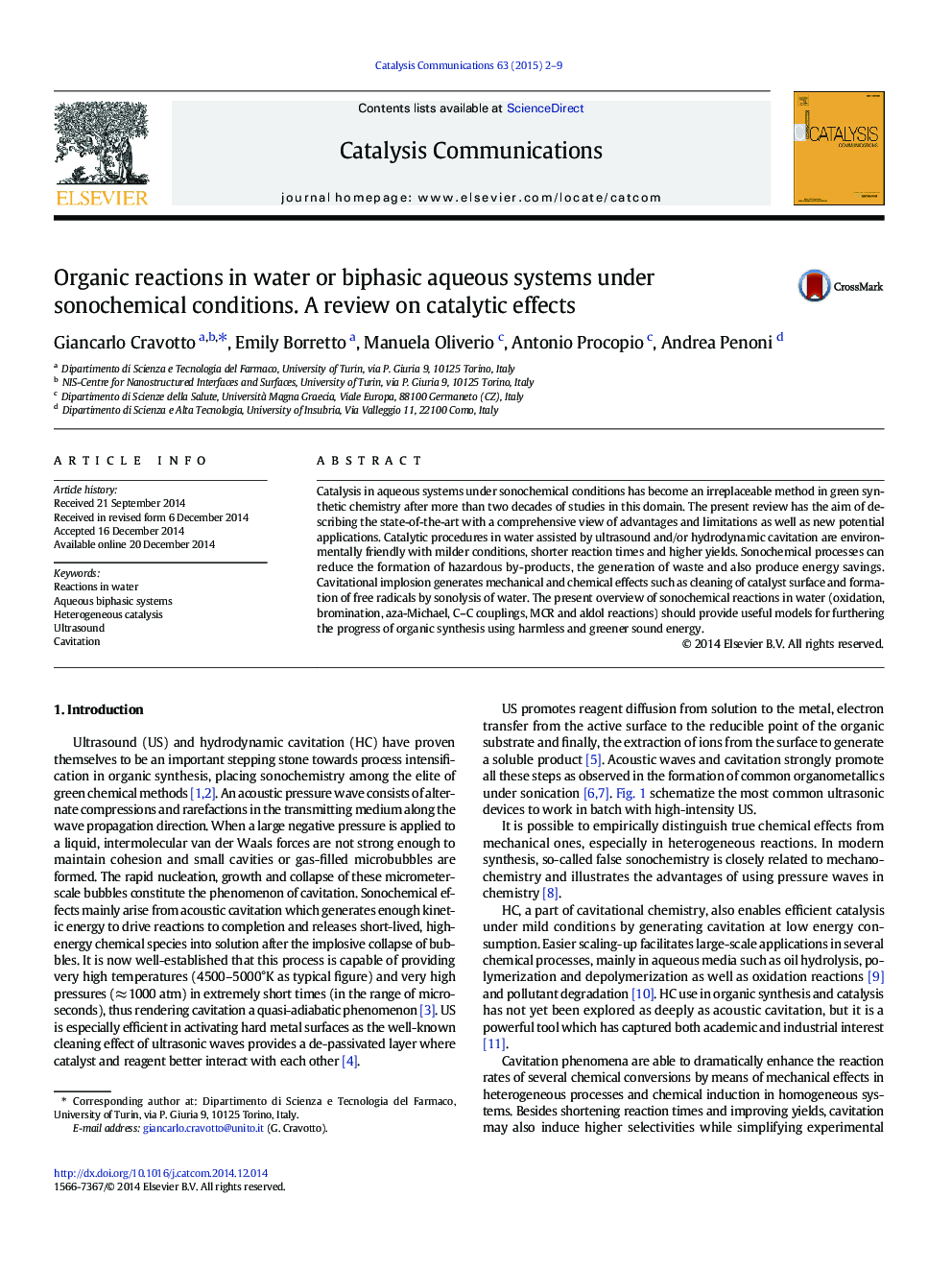| Article ID | Journal | Published Year | Pages | File Type |
|---|---|---|---|---|
| 50353 | Catalysis Communications | 2015 | 8 Pages |
•Catalysis of organic reactions in water is the main domain of sonochemistry.•An intimate mixing of catalyst and reagents is achieved under sonication.•Sonochemical reactions in water bring higher selectivity and yields.•Oxidation, bromination, Aza-Michael, C–C couplings, MCR and aldol reactions
Catalysis in aqueous systems under sonochemical conditions has become an irreplaceable method in green synthetic chemistry after more than two decades of studies in this domain. The present review has the aim of describing the state-of-the-art with a comprehensive view of advantages and limitations as well as new potential applications. Catalytic procedures in water assisted by ultrasound and/or hydrodynamic cavitation are environmentally friendly with milder conditions, shorter reaction times and higher yields. Sonochemical processes can reduce the formation of hazardous by-products, the generation of waste and also produce energy savings. Cavitational implosion generates mechanical and chemical effects such as cleaning of catalyst surface and formation of free radicals by sonolysis of water. The present overview of sonochemical reactions in water (oxidation, bromination, aza-Michael, C–C couplings, MCR and aldol reactions) should provide useful models for furthering the progress of organic synthesis using harmless and greener sound energy.
Graphical abstractFigure optionsDownload full-size imageDownload as PowerPoint slide
